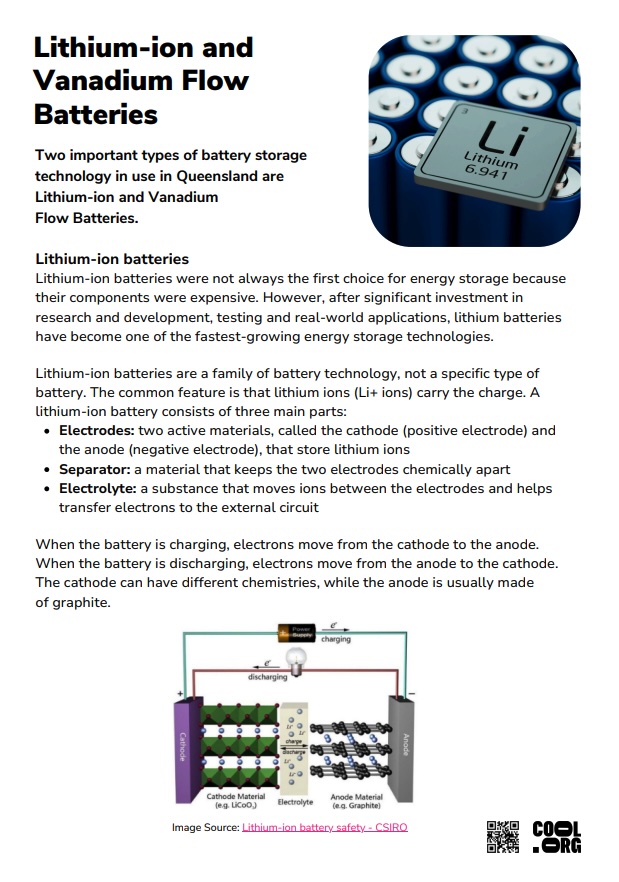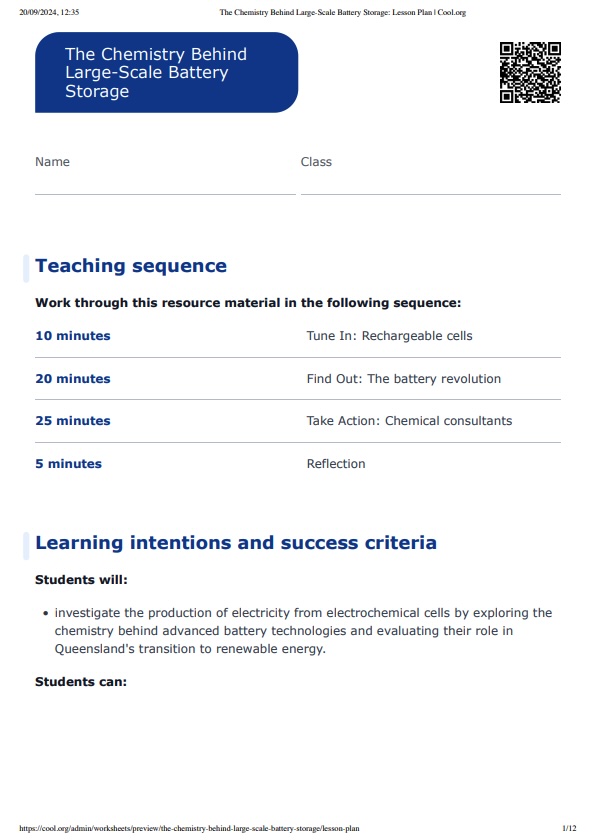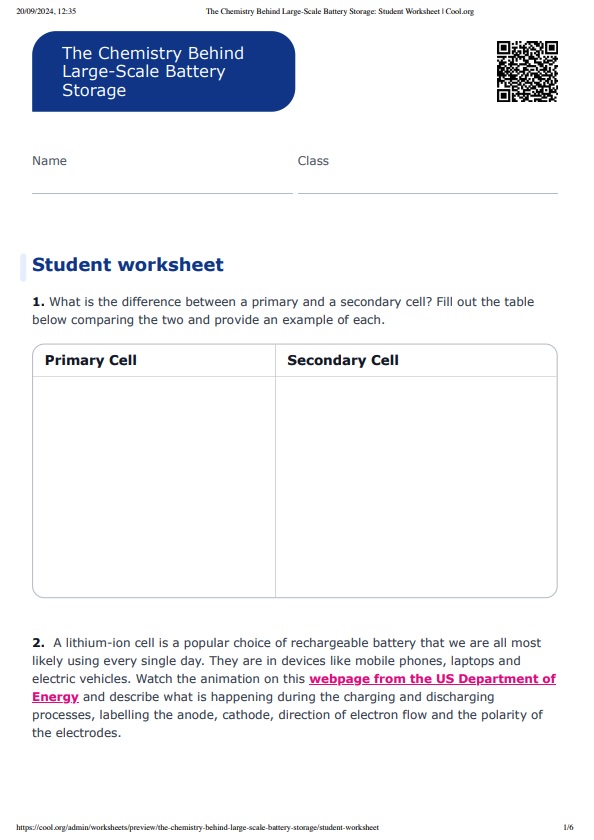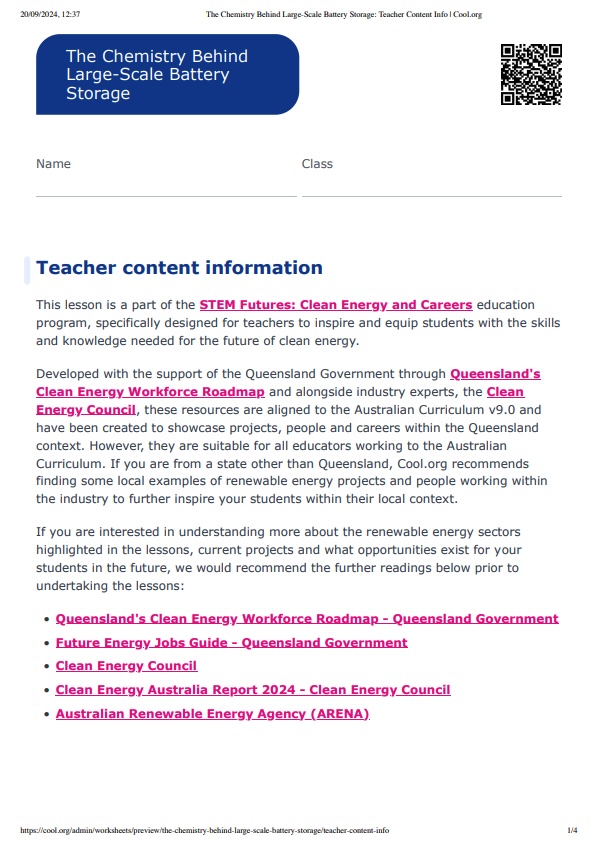Lesson summary
Students will explore the chemical principles underlying electrochemical cells and apply this understanding to evaluate and recommend advanced battery technologies such as Lithium-ion and Vanadium Flow batteries for Queensland's renewable energy transition. Through research and collaborative activities, students will connect their knowledge of redox reactions to real-world energy storage solutions, emphasising the critical role of chemistry in sustainable energy practices.
Learning intentions:
Students will...
- investigate the production of electricity from electrochemical cells by exploring the chemistry behind advanced battery technologies and evaluating their role in Queensland's transition to renewable energy.
Success criteria:
Students can...
- describe the key components and functions of electrochemical cells
- evaluate different battery technologies, such as Lithium-ion and Vanadium Flow batteries, by analysing their chemical properties, advantages, and limitations.
- recommend a suitable battery technology for Queensland's energy transition based on a detailed assessment of chemical principles, environmental impact, and economic considerations.
Lesson guides and printables

Lesson details
Skills
This lesson is designed to build students’ competencies in the following skills:
- critical thinking
- collaboration
- communication
- global citizenship
- problem-solving
Curriculum Mapping
Queensland Curriculum and Assessment Authority subject matter: Unit 3 Chemistry
Unit 3: Equilibrium, Acids and Redox Reactions - Topic 2: Oxidation and Reduction
- Explain that electrochemical cells, including galvanic and electrolytic cells, consist of oxidation and reduction half-reactions connected via an external circuit that allows electrons to move from the anode (oxidation reaction) to the cathode (reduction reaction)
- Discriminate between a galvanic and an electrolytic cell
- Identify the essential components of an electrolytic cell, including source of electric current and conductors, positive and negative electrodes, and the electrolyte
- Explore battery technologies that could power the future.
Complementary skills: 21st-century skills
Level of teacher scaffolding: Medium: facilitation of research
UN Sustainable Development Goals
UN SDG 7: Ensure access to affordable, reliable, sustainable and modern energy for all
- Target 7.a: By 2030, enhance international cooperation to facilitate access to clean energy research and technology, including renewable energy, energy efficiency and advanced and cleaner fossil-fuel technology, and promote investment in energy infrastructure and clean energy technology.
Resources Required
- Device capable of displaying audiovisual material
- Student devices for individual research
Additional Info
This lesson has been developed in partnership with the Queensland Government through Queensland's Clean Energy Workforce Roadmap. Cool.org would like to acknowledge and express our gratitude to the Clean Energy Council for the expertise and advice provided in creating these resources.
Related Professional Learning
STEM Professional Learning Pathway
Quick summary: Enhance your practice with Cool.org's STEM Professional Learning Pathway. This year-long plan is designed to build your skills and capabilities in teaching STEM, ultimately transforming you into a STEM Innovator. The pathway will prepare you to integrate STEM education effectively, adapt to technological advancements and inspire students to succeed in a rapidly evolving world.




Welcome back!
Don't have an account yet?
Log in with:
Create your free Cool.org account.
Many of our resources are free, with an option to upgrade to Cool+ for premium content.
Already have an account?
Sign up with:
By signing up you accept Cool.org's Terms and Conditions(Opens in new tab) and Privacy Policy(Opens in new tab).